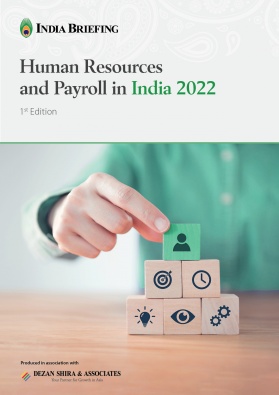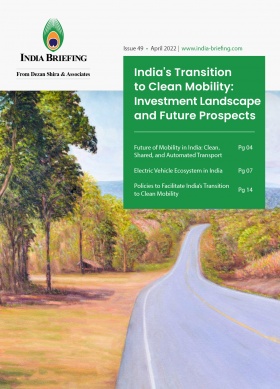An Overview of India’s Healthcare Ecosystem
India’s healthcare ecosystem is among the fastest growing sectors having benefited from government policies to make the country a global hub for health and wellness. There is huge scope for foreign investment in this area due to a liberalized FDI regime in various sub-sectors like hospitals, medical devices, health insurance, etc.
Driven by factors like population demographics, a growing middle class, rising incomes, better health awareness, and increasing lifestyle diseases, India’s healthcare market has been expanding at a compound annual growth rate (CAGR) of 22 percent. The Indian healthcare market, which was valued at US$86 billion in 2016 is now projected to reach US$367 billion by 2023 and US$638 billion by 2025 as per INC42. Data by Statista pegs this estimate at US$372 billion by 2022, up from US$160 billion in 2016.
The fast-moving growth in the sector is supported by improvements in healthcare coverage, services, and increasing expenditure by public as well as private players. In fact, post the Covid-19 pandemic, there is an increased call for self-reliance in the Indian healthcare system with focus shifting to innovation and research, drug and equipment manufacturing, digital transformation in health services, fair access to healthcare solutions, mental health, and wellness.
Overview of India’s healthcare ecosystem
The healthcare sector in India is among major contributors to the Indian economy, in terms of both revenue and employment. The sector has grown rapidly in the last five years on account of digitization, innovation, and newer hybrid business models with the integration of traditionalists and technology enterprises.
Further, the Covid-19 pandemic catalyzed long-term behavioral transformation towards personal health and hygiene, health insurance, fitness and nutrition, as well as health monitoring and medical check-ups. The pandemic also augmented the adoption of digital technologies, including telemedicine.
Moreover, the rising proportion of lifestyle diseases caused by high cholesterol, high blood pressure, obesity, poor diet, and growing alcohol consumption in urban areas is boosting demand for specialized care services.
Key segments of the Indian healthcare sector
India’s healthcare sector comprises hospital infrastructure, medical devices and equipment, health insurance, clinical trials, telemedicine, and medical tourism. These market segments are expected to diversify as an ageing population with a growing middle class increasingly favors preventative healthcare.
Hospitals and infrastructure
In FY 2021, the hospital industry in India accounted for 70 percent of the total healthcare market, followed by pharmaceuticals (20 percent) and medical technology (10 percent).
The long-term market outlook for hospitals in India is stable, with annual revenues likely to grow robustly over the next few years on account of rising domestic demand for healthcare as well as medical tourism.
While metropolitan cities like Delhi, Mumbai, Chennai, and Kolkata host super specialty hospital groups (Apollo, Fortis, Max, etc.) with world class infrastructure, healthcare players are now looking to expand in Tier-2 and Tier-3 cities, such as Nashik (Maharashtra), Indore (Madhya Pradesh), Visakhapatnam (Andhra Pradesh), Jaipur (Rajasthan), Mohali (Chandigarh), Surat (Gujarat), and Dehradun (Uttarakhand).
The hospital industry in India offers huge investment opportunities for both global and domestic investors. At present, there are 582 investment opportunities worth US$32.16 billion in the medical infrastructure sector.
Investors must note that 100 percent foreign direct investment (FDI) is allowed for construction of hospitals under the automatic route for greenfield projects and for brownfield projects, up to 100 percent FDI is permitted under the government approval route.
Pharmaceuticals
The current market size for pharmaceuticals in India is US$41 billion, and is expected to reach US$130 billion by 2030. The Indian pharmaceutical sector is the third largest in the world, with cost of production approximately 33 percent lower than in the US. According to data from the World Trade Organization (WTO), India ranked third globally in terms of volume of exports and 11th globally with respect to the value of exports in 2019. Forecasts suggest that Indian pharmaceutical exports will continue to rise, and the country is ready to become a pharmaceutical export hub. Between 2016 and 2020, India’s pharma exports grew at a CAGR of 5.98 percent, amounting to US$16.29 billion in FY 2020.
Major categories within India’s pharmaceutical sector are generic drugs, active pharmaceutical ingredients (API)/bulk drugs, over-the-counter drugs, vaccines, contract research and manufacturing, as well as biosimilars and biologics. The market size for biosimilars in India is approximately US$3 billion and is expected to touch US$12 billion by 2025.
At present, there are approximately 104 investment opportunities in pharmaceuticals, biotech, and life sciences sub-segments, worth US$199.5 million.
Biotechnology
The biotechnology sub-segment comprises biopharmaceuticals, bio-services, bio-agriculture, bio-industry, and bioinformatics. India’s biotechnology market is expected to grow at a CAGR of 30 percent to reach US$100 billion by 2025. In India, there are more than 2,500 biotechnology companies operating, employing approximately one million people, with around 15,500 biotechnology graduates joining the workforce every year.
Medical devices and equipment
Offering comparatively fewer barriers to entry, the Indian medical device industry is a sunrise sector, projected to reach US$50 billion by 2025. As per the Global Harmonization Task Force Rules, four classes (A, B, C, and D) of medical devices are manufactured in India.
The manufacturing of high-end medical devices (C and D) is led by multinational companies that have extensive service networks in India. This high-end segment has over 90 percent dependency on imports and offers considerable opportunities for investment. On the other hand, classes A and B, which are relatively less technologically advanced, are produced largely by domestic manufacturers. Most of these Indian manufacturers are micro, small, and medium enterprises (MSMEs) with an average turnover of US$450-500 million.
As a net importer of medical devices, India is particularly dependent on imports for high-tech medical products like as cancer diagnostics, medical imaging tools, ultrasonic scans, and PCR technologies. The primary challenge for the Indian medical devices industry remains the high cost of local manufacturing vis-à-vis competing economies, owing to lack of adequate infrastructure, insufficient domestic supply chain and logistics, high cost of finance, shortage of quality human capital, limited design capabilities, as well as gaps in research and development (R&D).
With vast demand and considerably strained supply, the medical devices market offers immense investment opportunities for investors. India allows 100 percent FDI for the medical devices segment through the automatic route.
Diagnostics
India’s diagnostics market is projected to grow at a CAGR of 20.4 percent to reach US$32 billion in 2022, registering a considerable increase from a valuation of US$4 billion in 2019. The share of the organized sector in the diagnostic segment is approximately 25 percent (15 percent in labs and 10 percent in radiology).
Although this segment is largely fragmented at present, large investors are building hub-and-spoke structures, thereby consolidating the industry. Additionally, the new Clinical Establishment (Central Government) Rules, 2019, will also lead to standardization and better quality. Over the next few years, this segment is expected to register growth, offering significant opportunities for investors.
Additionally, the novel concept of miniaturized diagnostics has been gaining traction. With technological advancements, it is now possible to diagnose many conditions at a much cheaper price with the aid of a small hand-held device or an add-on to a smartphone. The capability of such devices is increasing exponentially, as is their potential to diagnose a large number of ailments instantly at a low cost.
Medical tourism
Medical tourism is fast evolving as an attractive segment of the Indian healthcare sector. In 2020, before the pandemic struck, India’s medical tourism industry was valued at approximately US$9 billion and expected to grow to US$13 billion by 2022. In fact, in 2017, India ranked seventh in the top 20 wellness tourism markets globally and third in the top 10 wellness tourism markets in Asia-Pacific. The number of foreign tourist arrivals (FTAs) in India on medical visa grew to an estimated 697,000 in 2019 from 184,298 in 2014.
Major contributing factors include the presence of world-class hospitals and skilled medical professionals, superior quality healthcare, low treatment costs in comparison with other countries, credibility of alternative systems of medicine, as well as increased global demand for wellness services like Yoga and meditation.
India has around 37 Joint Commission International (JCI) accredited hospitals as well as 513 National Accreditation Board for Hospitals & Healthcare Providers (NABH) accredited hospitals.
Cost comparison of medical procedures across major global healthcare hubs
Home healthcare
A Niti Ayog 2021 industry report identifies the Indian home healthcare market as a sunrise sector, valued at US$6.2 billion in 2020 and estimated to touch US$21.3 billion by 2027. This segment is slated to grow at 19.2 percent CAGR, driven by factors like a rising elderly population, increase in the incidence of chronic diseases necessitating long-term care, enhanced demand for constant personalized care, as well as the increasing number of nuclear families in rapidly urbanizing areas. The home healthcare segment employs a unique home care model where it is possible to reduce infrastructure and operational costs by 15-30 percent vis-à-vis hospital expenses for similar treatment.
Components of home healthcare
Postoperative care is an important component of the home healthcare segment. Additionally, technology-enabled healthcare companies also offer sophisticated critical care at home, including advanced facilities like respiratory services (home ventilation), palliative care, cancer support services, post trauma/ accident care, etc. This segment can be categorized into the following broad subdivisions:
- Home healthcare services: At-home nursing services, medical consultations
- Home healthcare devices: Health screening, monitoring, and self-diagnostic devices like pulse oximeters
- Home healthcare solutions: Telehealth and telemedicine
Telemedicine
The market size for telemedicine in India was valued at approximately US$830 million in 2019 and is projected to increase to US$5.5 billion by 2025 at 31 percent CAGR during the period 2020-25. Virtual care—constituting teleconsulting, telepathology, teleradiology, and e-pharmacy—is experiencing a stimulus in India. Major hospital groups like Apollo, AIIMS, Narayana Hrudayalaya, etc. have adopted telemedicine services and entered a number of public private partnerships (PPPs). By September 21, 2021, the Health Ministry’s eSanjeevani telemedicine service had crossed 12 million teleconsultations since its launch, enabling patient-to-doctor consultations and doctor-to-doctor consultations.
Health insurance
Health insurance contributes 20 percent to the non-life insurance business, making it the second largest portfolio. The primary factors driving growth in this segment include rising income levels, increasing awareness in urban areas, and growing lifestyle-related health demands. However, the penetration of health insurance in India continues to remain abysmally low, presenting huge opportunities for investors to tap into the market. India now allows up to 74 percent FDI in the insurance sector, with relaxed ownership norms.
In the insurance sector too, the players have been leveraging technology and strategic partnerships to deliver innovative products. For example, social messaging platform WhatsApp announced plans in December 2020 to debut opportunities for health insurance and micro-pension products in India. Many foreign players like Allianz SE (Germany), Tokio Marine (Japan), Munich Health (Germany), Insurance Australia Group – AIG (Australia), BUPA Finance PLC (UK), etc. have partnered with their Indian counterparts to enter the Indian insurance market.
In the wake of the pandemic, many new health insurance start-ups have witnessed considerable growth.
- Launched in May 2021, the Mumbai-based HealthySure is an insurtech startup that targets SMEs and makes insurance and healthcare for employees affordable and accessible. The platform offers digitized policy and claim experience with curated health and wellness offerings.
- Bengaluru-based Kenko Health is a health insurance startup that intends to make health finance accessible. It provides OPD benefits, such as doctor consulting fees and diagnostic costs, within a predefined closed network. It also provides a subscription-based service that covers health expenses, focused on middle-income households in Tier II cities that are not covered by standard health insurance schemes.
Factors driving growth in the Indian healthcare sector
Investment trends
The healthcare sector in India recorded cumulative FDI to the value of almost US$29.28 billion between April 2000 and December 2021. Of this, the drug and pharmaceutical segment witnessed the highest investment value of more than US$19 billion. Inflows in industries, such as hospitals and diagnostic centers and medical and surgical appliances, stood at US$7.73 billion and US$2.35 billion, respectively.
About Us
India Briefing is produced by Dezan Shira & Associates. The firm assists foreign investors throughout Asia from offices across the world, including in Delhi and Mumbai. Readers may write to india@dezshira.com for more support on doing business in in India.
We also maintain offices or have alliance partners assisting foreign investors in Indonesia, Singapore, Vietnam, Philippines, Malaysia, Thailand, Italy, Germany, and the United States, in addition to practices in Bangladesh and Russia.
- Previous Article India M&A Activity Peaks in 2022, Defies Global Downward Trends
- Next Article MSMEs in India Now Eligible for Non-Tax Benefits for up to 3 Years After Reclassification

















